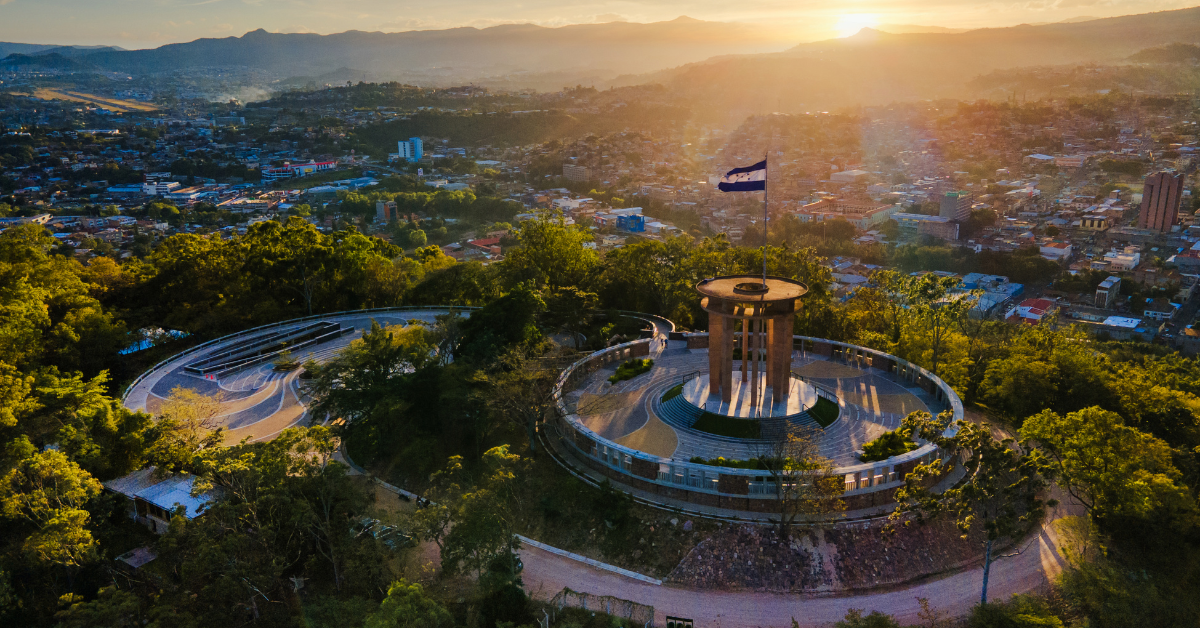Honduras is a country in Central America that remains relatively unfamiliar to many Japanese people. While Chinese-speaking regions use the Kanji “洪都拉斯”, in Japan, the Katakana “ホンジュラス” is standard. Beyond its name, Honduras evokes mixed impressions in Japan—from its beautiful nature and Mayan ruins to concerns about safety and its passionate soccer culture.
The Kanji Representation “洪都拉斯”
Writing Honduras as “洪都拉斯” is a convention specific to Chinese-speaking regions. This is an onomastic transcription prioritizing sound over meaning. The Kanji chosen—such as “洪” (flood), “都” (metropolis), and “拉斯”—do not describe the country’s characteristics but are selected to approximate pronunciation.
In Japanese, this representation is not used, and instead, Katakana “ホンジュラス” is the standard form, following the rules for transcribing foreign words.
| Language | Representation | Explanation |
|---|---|---|
| Japanese | ホンジュラス | Katakana is used for foreign country names |
| Chinese-speaking regions | 洪都拉斯 | Phonetic transcription based on sound |
| English | Honduras | Derived from Spanish pronunciation |
Japanese People’s Image of Honduras’ Nature
Honduras is blessed with abundant natural resources. Its most famous attractions include the beaches along the Caribbean coast and the ancient Mayan ruins.
The following table summarizes representative tourist spots and their impressions on Japanese travelers.
| Destination | Features | Impression for Japanese |
|---|---|---|
| Roatán Island | World-class diving spot | Seen as a beautiful tropical resort |
| Copán Ruins | Central Mayan archaeological site | Appeals to history enthusiasts |
| La Tigra National Park | Rainforests and diverse ecosystems | Attractive destination for eco-tourism |
For Japanese people, Honduras may feel like a “distant country,” but its natural beauty and historical significance make it an intriguing place to visit.
Perceptions of Safety in Honduras
One unavoidable topic when discussing Honduras is safety. Media and travel advisories often highlight Honduras as a country “where safety precautions are necessary.”
However, while risks are reported, many tourist destinations are relatively safe if travelers exercise caution. Understanding the regional differences in safety is critical.
| Region | Safety Characteristics | Advice for Japanese Travelers |
|---|---|---|
| Tegucigalpa (Capital) | Reports of urban crime | Avoid going out at night |
| San Pedro Sula | Known for high crime rates | Limit unnecessary travel |
| Roatán Island | Safer as a tourist hub | Remain alert for scams or petty theft |
Thus, it is inaccurate to say “the entire country is dangerous.” Recognizing regional variations allows for more realistic safety strategies.
Soccer as a Bridge Between Japan and Honduras
Honduras is also widely known as a soccer nation. The national team has qualified for the FIFA World Cup multiple times and has played against Japan. For many Japanese, their first exposure to the name “Honduras” came through soccer matches.
| Item | Details |
|---|---|
| World Cup Appearances | 1982, 2010, 2014 |
| Style of Play | Strong physical defense and speed |
| Relation with Japan | Friendly matches and international tournaments |
Soccer is deeply ingrained in Honduran society, and “soccer is considered a source of national pride.” This shared passion allows Honduras to connect with Japan on a cultural level despite geographical distance.
The Sense of Distance for Japanese Travelers
Traveling from Japan to Honduras is not simple. With no direct flights, travelers must typically transit through the United States. This long travel time reinforces the impression of Honduras as a “faraway country.”
| Departure | Transit | Destination | Approx. Travel Time |
|---|---|---|---|
| Tokyo | Los Angeles → San Pedro Sula | About 20+ hours | |
| Osaka | Houston → Tegucigalpa | About 22+ hours | |
| Nagoya | Dallas → San Pedro Sula | About 23+ hours |
Although the long journey poses a psychological hurdle, many consider Honduras to be a country where the experience feels especially rewarding once visited.
Cultural and Culinary Appeal
Honduran culture bears strong influences from its Spanish colonial past. Spanish-style architecture can still be seen, and traditional festivals showcase folk music and dance.
The cuisine also reflects local traditions and ingredients.
| Dish | Features | Impression for Japanese |
|---|---|---|
| Baleadas | Wheat tortillas filled with beans and cheese | Simple and easy to enjoy |
| Tamales | Corn dough filled with meat and vegetables, steamed in leaves | Offers authentic Latin flavor |
| Coconut Soup | Seafood simmered in coconut milk | Exotic and tropical taste |
For Japanese visitors, these foods represent unique culinary experiences that differ greatly from daily meals back home.
Conclusion
The Kanji representation “洪都拉斯” is unique to Chinese-speaking regions, while in Japanese the country is written as “ホンジュラス.” For Japanese people, Honduras is seen as “a country of natural beauty,” yet also “a place where safety precautions are needed.” At the same time, it is increasingly recognized as “a soccer nation with cultural ties to Japan.”
Despite its geographical distance and security concerns, Honduras offers rich opportunities in nature, history, and culture. By understanding its multiple aspects, Japanese people can view Honduras not just as a distant land but as a country worth knowing and connecting with.
In the future, as cultural and sporting exchanges increase, Honduras is likely to gain more recognition and appreciation in Japan.






